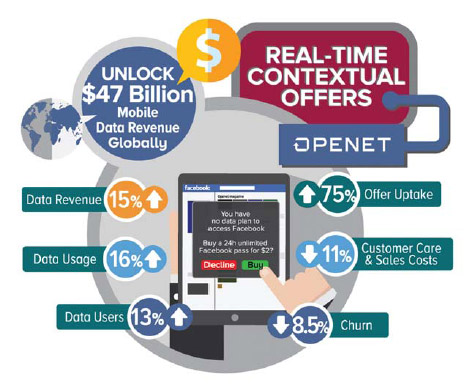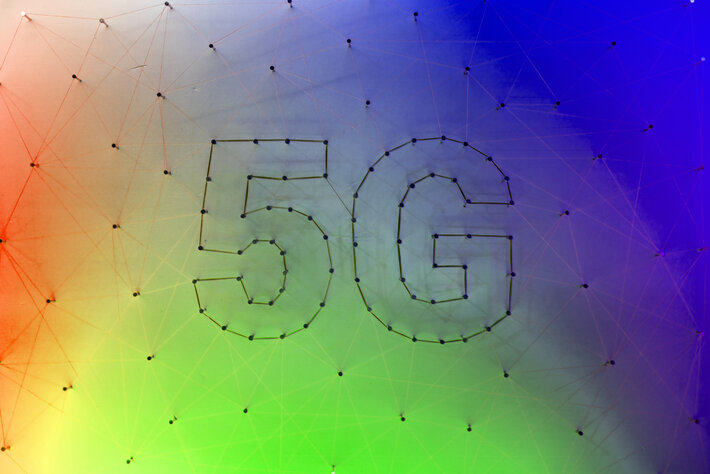Philip Hogan is a founder of real-time BSS company Openet and is currently the company’s general manager of sales and services. He tells VanillaPlus that communications service providers have the tools available to generate a highly accurate picture of the needs of their customers. The key to extracting revenue from that picture is to use it to establish real-time context-aware offers that customers welcome and are willing to pay for
VanillaPlus: In December we normally see the usual spike in new smartphone and tablet sales, followed by the increase in spending on apps and content. There’s a huge increase in money being spent on digital products and services yet many mobile operators are seeing their revenues squeezed. Do you think CSPs understand their customers well enough to get a share of the revenue that is being spent on digital products and services?
Philip Hogan: CSPs have seen themselves squeezed out of the value chain in recent years. They’ve provided the pipes and others have provided the content, apps and services that people spend money on and interact with. However, there’s been a move towards CSPs understanding how different people use services on their devices and then combining this knowledge with business intelligence. This creates an understanding of the real-time subscriber context, which can then be used to market and sell timely, relevant and personalised products, services and offers that can generate a substantial revenue stream for CSPs.
In October 2014 Openet ran a survey of 87 mobile operators worldwide. They said that real-time contextually aware offers could increase data revenues on average by 15%. This represents a $47 billion revenue opportunity for operators globally. This is a big enough figure to get people to ask what is a real-time offer. To give a very simple example, take a customer with no data plan who tries to access Facebook. Rather than just apply data usage charges for the megabyte consumed, the customer is automatically sent a one day application pass to try out Facebook on their mobile for a nominal fee or even for free. This is a simple example, but with the offer being made in real-time direct to the device it provides a marketing offer that is relevant and timely to the customer and therefore has a much better chance of take up. Make the same offer two days or even two hours after the customer tried to access Facebook and the chances of success are greatly reduced.
VP: Aren’t CSPs already sending real-time notifications to customers – for example when they reach their credit limit or when they start roaming?
PH: Yes, at Openet we pioneered many of the early realtime notifications that were sent to customers, such as fair usage and real-time charging alerts. Many of these alerts are used to communicate or control – for example, you’re reaching your credit limit warnings. Traditionally they were not used to upsell new services. CSPs have this real-time channel to consumers for sales and marketing yet many still have an over-reliance on traditional sales and marketing channels – these probably work well enough for buying a new handset, but for addons and other online digital services and products customers want instant gratification. They want to buy and use services immediately.
VP: What exactly is a customer’s context – is this to do with location, the service being used and network experience?
PH: Context is important as it enables a high degree of personalisation. As well as identifying trigger events in real-time – in the case above, the customer is trying to access Facebook – we also have information on a customer’s profile. This could include remaining credit, day in bill cycle, risk of churn score and others, and we use this information combined with the trigger event to automatically select the most relevant offer for that customer at that moment.
VP: CSPs send many marketing messages direct to the device. It’s a proven marketing channel that seems to be working – how are you proposing that CSPs make direct to the device a more effective channel?
PH: Direct to the device offers do work well for CSPs. In our survey CSPs said that they currently get a take up rate of 8% for direct to the device offers. In anyone’s language that equates to very good channel performance. But by making these offers context sensitive and real-time the CSPs surveyed said that this figure would increase to 14%. This represents a 75% increase in channel effectiveness.
VP: So this provides the ability for CSPs not only to sell more of their own services, but also those of partners – such as video or music providers?
PH: Absolutely – this is a good way to sell Netflix partnerships to people who watch videos on their mobiles, and Spotify partnerships to people who maybe watch a lot of YouTube music videos. People could be streaming a YouTube music video in order to listen to music. Having the ability to provide real-time contextual offers to upsell third party content and services makes the mobile operator more attractive as a partner – and not just a delivery pipe – for content providers and as such can open up new revenue sharing models.
VP: What’s the main ingredient here – why aren’t more CSPs providing these types of offers?
PH: Real-time contextual offers need to be developed and driven by a centralised offer catalogue from which offers can be created, launched and updated very quickly. As real-time offers become more successful CSPs will need to develop and maintain a larger base of offers. Many of these may have a relatively short life span and they will all have a very short time to market. The last thing a CSP needs is for the BSS vendor to wheel in an army of software engineers to update the offer catalogue. CSPs need to do this themselves, and they need a rules based catalogue that makes offer development and maintenance easy and quick to do. However it’s more than collecting real-time data and developing a centralised offer catalogue. There are many BSS components that need to be updated. The process is that once an offer has been selected and purchased by the customer, it is then automatically activated on the customer’s account. Offer settings will be provisioned on the necessary BSS and network elements to ensure that the offer has started for the customer. The user will be informed of the successful activation while in the background, everything has been pushed into place in a logical sequence and the customer gets the service they just selected in real-time.
A problem is that many CSPs don’t have a rules based centralised offer catalogue plus the automated BSS orchestration software that is needed to enable real-time offers. Of our survey of 87 CSPs around two-thirds of respondents currently don’t have this capability, but they pretty much all said that it was needed to sell more products and services and generate new revenue streams. The good news is that CSPs can install these real-time offer systems as adjuncts to existing BSS, so they don’t need expensive and time consuming rip and replace projects.
VP: There’s been much talk about mass personalisation of mobile services. Do real-time contextual offers enable this to become a reality?
PH: The use of event triggers enables personalisation through automated offers that have gone through a decision process shaped by a person’s context. But personalisation is a very subjective term. A CSP could set up an offer, select the context check points and set up the triggers for an offer to be made. Some people will buy it, others won’t. CSPs need to quickly understand why certain customers aren’t buying a particular offer. The usual process of analysis of marketing offers taking months is changing. When you’re selling add on and upsells direct to the device the need for fast offer refinement is significant. It’s important that CSPs continuously learn from the success of offers to constantly refine them. In order to do this they need real-time reporting of offer effectiveness so they can quickly adjust the offers or upsell strategy.
Real-time contextually aware offers can do more that drive up data revenues. Our CSP survey showed that marketing and customer care costs can come down by 11%, data usage can go up by 16%, new data users increase by 13% and churn reduces by 8%. CSPs can drive revenues up by making and enabling offers to be delivered in the same way that customers use the internet – personalised and in real-time.






